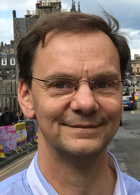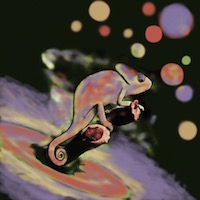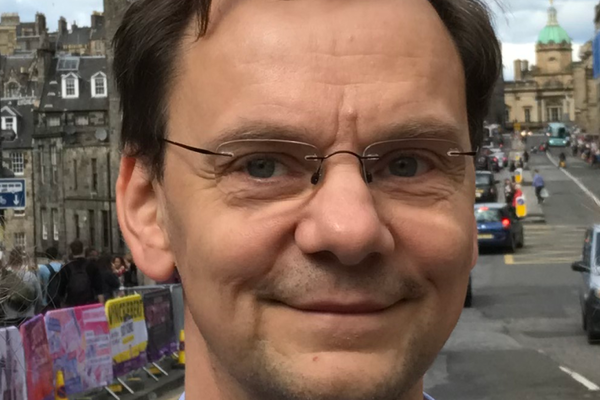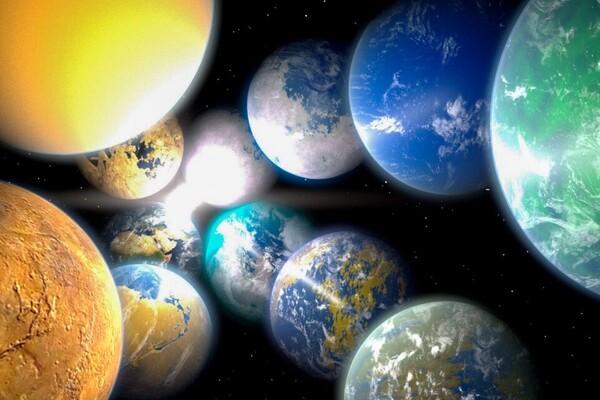
Research Interests
Peter Woitke has developed a number of basic physical theories and computer simulations for low-energy astrophysical objects, in particular for the dust-driven winds of red giant stars, cloud formation in brown dwarf and planetary atmospheres, and a new generation of radiation thermo-chemical models for protoplanetary disks, which unite astrochemistry with line and continuum radiative transfer, and heating & cooling balance for both gas and dust. They have been used world-wide to analyze various continuum and line observational data from protoplanetary disks, for example spectral energy distributions, and continuum images, IR molecular emission bands, and far-IR and millimeter atomic and molecular line emissions and channel maps.
My research questions are
- What is the temperature and chemical structure in planet-forming disks?
- How do complex molecules and ice phases form in disks and evolve in time?
- What is the impact of the thermo-chemical structure on planet formation?
- What is the initial composition of the refractory materials that are formed during the earliest stages of disk evolution?
- What is the chemical composition of the atmospheres of plates and moons, in particular rocky exoplanets?
- How to clouds form?
In the FP7 SPACE project DIANA (PI Woitke), such observations have been systematically collected and simultaneously fitted by unique disk models. These models are currently used and further developed in the Marie Sklodowska-Curie Innovative Training Networks project CHAMELEON (PI Helling).
Woitke's recent work on general purpose chemical & phase equilibrium model GGchem and cloud formation has recently been used a lot in the exoplanet community, for example to introduce a chemical classification of exoplanet atmospheres and to understand the crust-atmosphere interaction of rocky planets. These models have provided critical input for the modelling of the chemical structure, cloud formation, and atmospheric escape of exoplanets.
Career Summary
| since 10/21 | Group Leader, Institut für Weltraumforschung, ÖAW, Austria |
| 01/12 - 09/21 | staff member of St. Andrews University, Scotland, UK |
| 01/11 – 12/11 | Kepler post-doc at the University of Vienna, Austria |
| 08/10 – 12/10 | post-doc at the Kapteyn institute, Groningen, The Netherlands |
| 05/10 – 07/10 | visiting professor at the Institut de Planetologie et d’Astrophysique de Grenoble, CNRS/Universite Joseph Fourier, France |
| 09/07 – 09/10 | post-doctoral research assistant at the Astronomy Technology Centre (ATC) Edinburgh, Scotland, UK, Project: Modelling of spectral lines from protoplanetary discs |
| 11/06 – 10/07 | guest scientist at the School of Physics & Astronomy, University of St. Andrews, Scotland, UK |
| 12/03 – 10/06 | post-doc at Sterrewacht Leiden, The Netherlands, theory group, Project “AstroHydro3D” (NWO): Multi-dimensional radiative hydrodynamics for the dust-driven winds of red giants |
| 09/02 – 11/03 | parental leave |
| 06/99 – 09/02 | post-doc at the Centre of Astronomy & Astrophysics, TU Berlin, Germany, Sonderforschungsbereich 555 “Complex nonlinear processes”, Project B8: Self-organised structure formation by radiatively controlled phase transitions |
| 02/97 – 04/99 | post-doc at the Centre of Astronomy & Astrophysics, TU Berlin, Germany, Project: Shock induced condensation around R Coronae Borealis stars |







